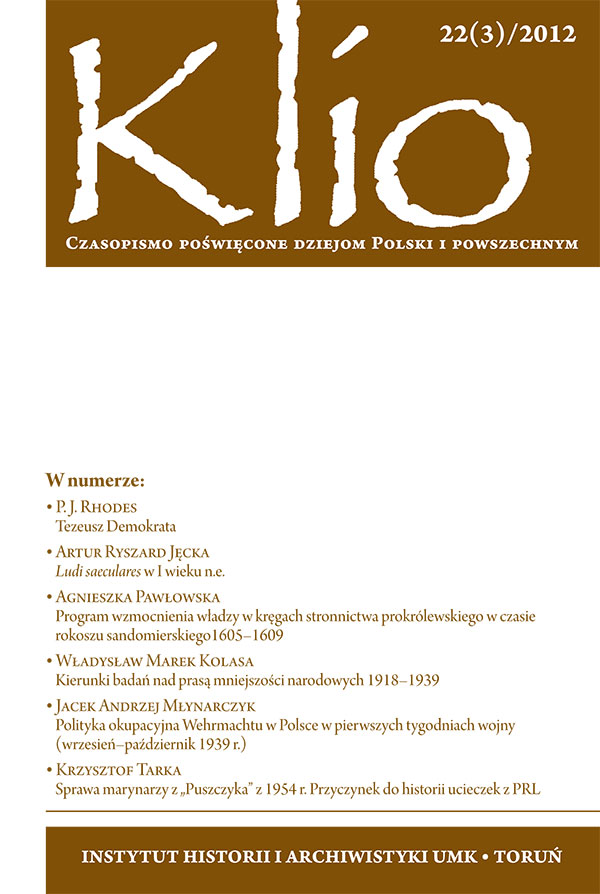Kierunki badań nad prasą mniejszości narodowych 1918–1939
DOI:
https://doi.org/10.12775/KLIO.2012.041Abstrakt
The article contains a brief description of the press of national minorities published in the Second Polish Republic and it discusses directions and results of research conducted by historians after 1945. A citation analysis was used to evaluate the research achievements in wider terms. Media activity of the national minorities in the years 1918–1939 was quite high. According to the latest data, more than 3500 newspapers and magazines published in languages of individual nations were published in these years. The largest number of the magazines was printed in Yiddish (1715), Ukrainian (1132) and German (683); the Belarusian (188), Lithuanian (190) and Russian (98) magazines were less numerous. However, the ranking was different when we take into account the impact of the press: what stood out was the German press (7.60 of copies for 100 people), then the Jewish press (3.18), with the almost insignificant Ukrainian (0.2) and Belarusian press (0.36). Interest of historians in the press of the minorities was quite high in the entire postwar period. A total of 78 scholars worked in this area. They published 172 works, which were cited 316 times in the scope of the native discourse (press history). After 1945 the three biggest press systems were the favourite research subjects: the Jewish one (92 publications) [220 citations], the Ukrainian one (32) [49] and the German one (21) [28]; in comparison to them, interest in press of other minorities was insignificant (25) [16]. The general reflection was even less important (2) [3]. Therefore the only source of knowledge concerning this issue were fragments of well-known monographs, in particular the text of Andrzej Paczkowski included in the synthesis ”Prasa polska w latach 1918–1939” [“Polish press in the years 1918–1939”] (Warsaw 1980, pages 343–362) [154 citations]. Th is research was carried out in 1971 for the needs of a model and – according to the statistics – it played an important role in inspiring further research (158 papers), but despite its provisional and concise form, a newer or more competitive version has never been created.
Pobrania
Opublikowane
Jak cytować
Numer
Dział
Statystyki
Liczba wyświetleń i pobrań: 328
Liczba cytowań: 0



